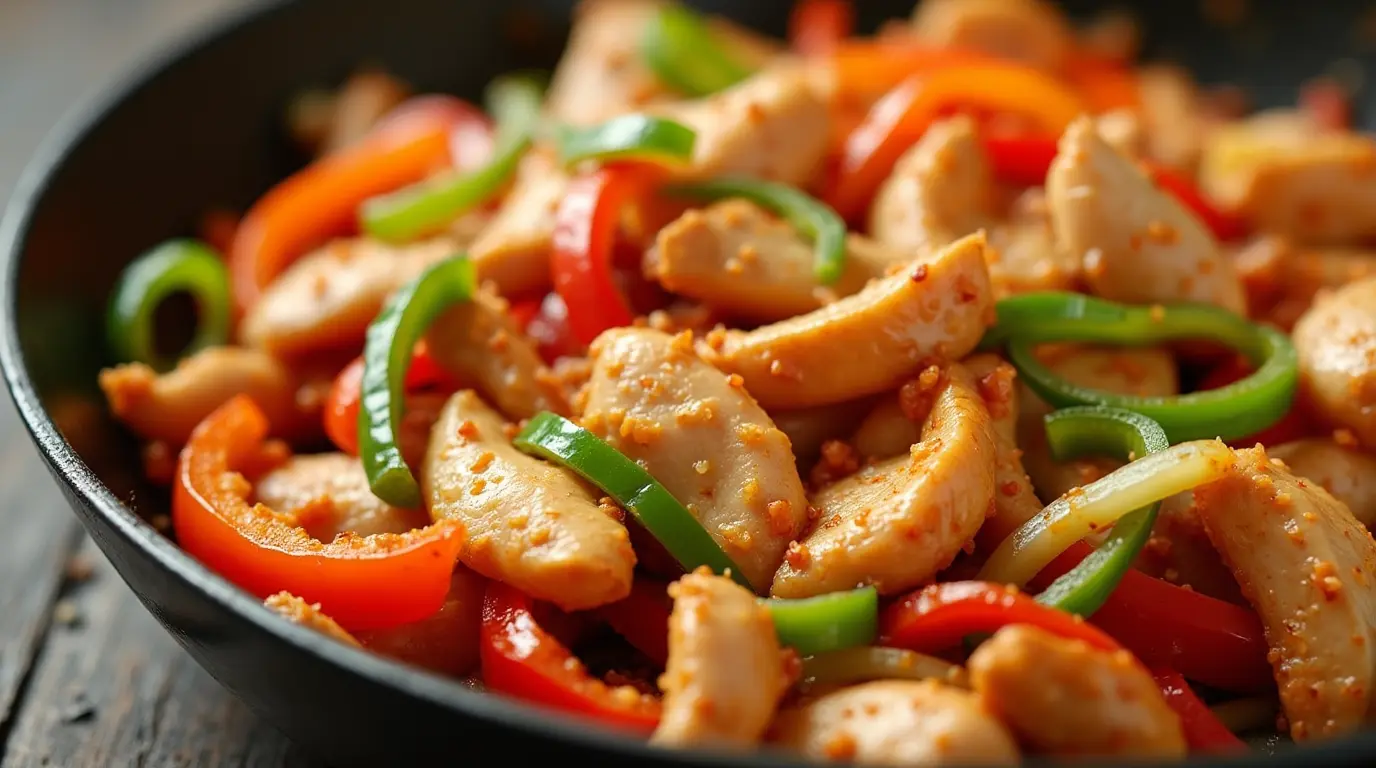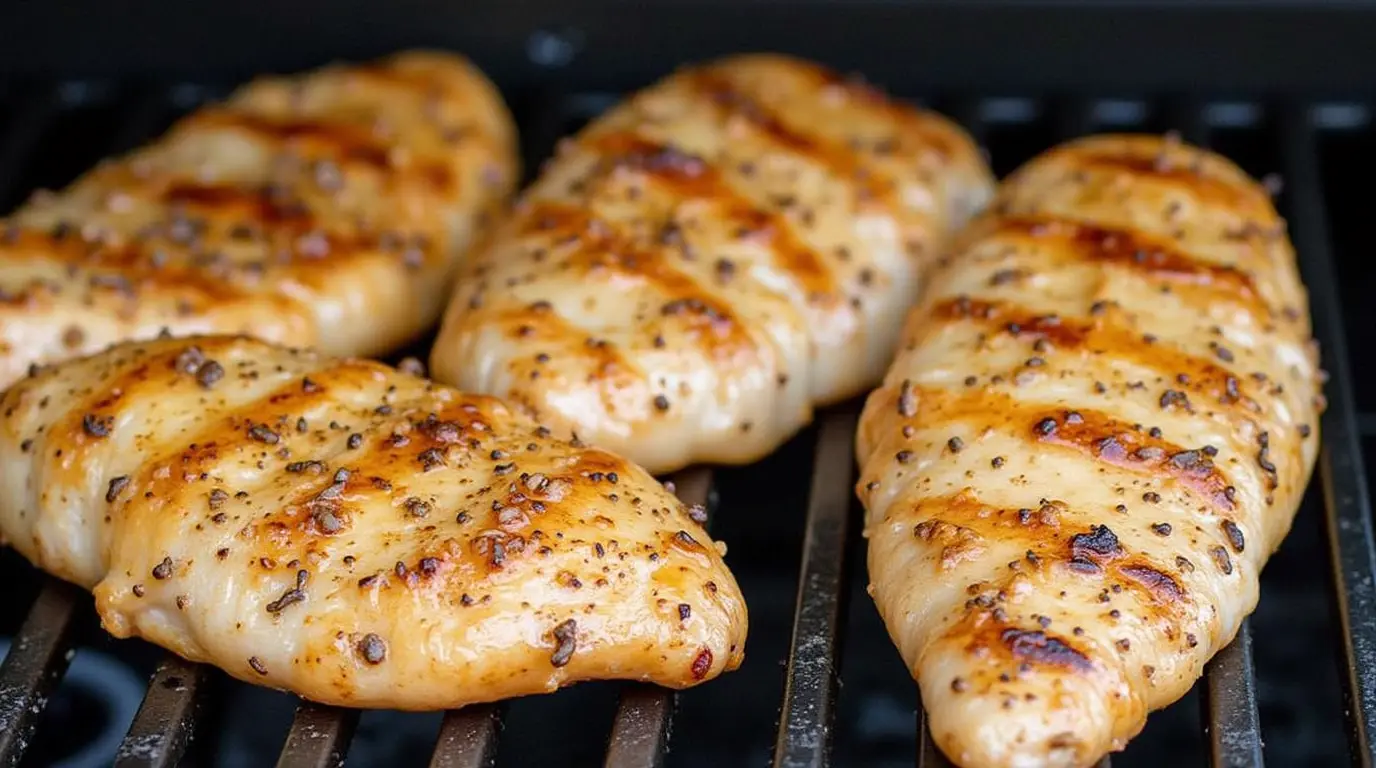Looking for fast, juicy chicken that never dries out?
Thin cut chicken breasts are your new weeknight weapon. Whether grilled, pan-seared, or air-fried, they cook in minutes, and taste like you spent hours. Let’s unlock the secrets to quick, flavorful meals using this underrated cut.
Table of contents
Benefits of Cooking with Thin Cut Chicken Breast Recipes
Quick and Easy Preparation
Thin cut chicken breast cooks faster than regular chicken breasts. Since the chicken is sliced thin, it cooks through quickly, making it an ideal option for busy weeknights. You can prepare a meal in no time, without compromising on flavor.
Additionally, thin chicken breasts take less time to marinate or season. This allows for more flexibility in your meal planning, so you can easily add different flavors without waiting long for the chicken to absorb them.
Health Benefits of Thin Cut Chicken Breast
Thin cut chicken breast is a lean protein source. It’s low in fat and high in protein, making it a healthy choice for any meal. Whether you’re trying to lose weight, maintain a healthy lifestyle, or just enjoy a nutritious meal, this cut of chicken is a great option.
Incorporating thin cut chicken breast into your diet can help support muscle repair and overall body function, making it a great addition to any balanced diet.
Versatility in Different Dishes
Thin cut chicken breast is incredibly versatile. It can be used in a variety of cooking methods, such as grilling, stir-frying, baking, or slow cooking. This makes it a perfect base for many different types of dishes.
Whether you’re craving a fresh chicken salad or something more adventurous like chicken tacos, thin cut chicken breast adapts well to all kinds of cuisines and flavors, giving you endless meal possibilities.
Popular Recipes Using Thin Cut Chicken Breast
Thin cut chicken breast can be transformed into many delicious dishes. Below are some of the most popular and easy-to-make recipes that highlight the versatility of this tender cut of chicken. Whether you’re in the mood for grilling, baking, or creating a quick stir-fry, these recipes will show you just how simple it is to enjoy thin cut chicken breast in different ways.
Grilled Thin Cut Chicken Breast
Grilling is one of the easiest ways to cook thin cut chicken breast, and it brings out a smoky, delicious flavor.
Ingredients for Grilled Thin Cut Chicken Breast
- 4 thin cut chicken breasts
- 2 tablespoons olive oil
- 1 teaspoon garlic powder
- 1 teaspoon paprika
- Salt and pepper to taste
- Lemon wedges (optional)
Directions for Grilled Thin Cut Chicken Breast
- Preheat your grill to medium-high heat.
- In a small bowl, mix olive oil, garlic powder, paprika, salt, and pepper.
- Brush the mixture evenly onto both sides of the chicken breasts.
- Place the chicken on the grill and cook for 3-4 minutes on each side, or until the chicken reaches an internal temperature of 165°F (75°C).
- Remove from the grill and let it rest for a few minutes before serving with lemon wedges for extra flavor.
Tips for Perfectly Grilled Chicken Breast
- Make sure the grill is preheated to avoid the chicken sticking.
- Don’t overcook the chicken; it cooks quickly due to its thinness.
- You can also marinate the chicken for extra flavor before grilling.
Baked Thin Cut Chicken Breast with Herbs
Baking thin cut chicken breast with herbs is a simple yet flavorful way to prepare a meal. This method keeps the chicken moist and tender while infusing it with delicious herbs.
Ingredients for Baked Chicken Breast with Herbs
- 4 thin cut chicken breasts
- 2 tablespoons olive oil
- 1 teaspoon dried thyme
- 1 teaspoon dried rosemary
- 1 teaspoon garlic powder
- Salt and pepper to taste
Step-by-Step Directions
- Preheat your oven to 400°F (200°C).
- Drizzle olive oil over the chicken breasts and season with thyme, rosemary, garlic powder, salt, and pepper.
- Place the chicken breasts on a baking sheet lined with parchment paper.
- Bake for 15-20 minutes, or until the chicken reaches an internal temperature of 165°F (75°C).
- Remove from the oven and let it rest before serving.
Cooking Time and Temperature
- Bake the chicken for 15-20 minutes at 400°F (200°C), depending on the thickness of the breast.
- Always check the internal temperature with a meat thermometer to ensure the chicken is fully cooked.
Thin Cut Chicken Breast Stir Fry

A stir-fry is an excellent way to use thin cut chicken breast, as it cooks quickly and absorbs the flavors of the sauce and vegetables.
If you’re using chicken breast for cooking, don’t discard the bones! Instead, use them to create a nourishing chicken bone broth packed with nutrients.
Ingredients for Chicken Breast Stir Fry
- 4 thin cut chicken breasts, thinly sliced
- 1 tablespoon sesame oil
- 1 bell pepper, sliced
- 1 onion, sliced
- 2 cloves garlic, minced
- 2 tablespoons soy sauce
- 1 tablespoon honey
- 1 tablespoon rice vinegar
- 1 teaspoon grated ginger
Stir Fry Directions and Tips
- Heat sesame oil in a large pan or wok over medium-high heat.
- Add the thinly sliced chicken and cook for 3-4 minutes, stirring constantly, until the chicken is browned and cooked through.
- Add the garlic, bell pepper, onion, and ginger to the pan. Stir-fry for another 2-3 minutes, until the vegetables are tender-crisp.
- In a small bowl, whisk together the soy sauce, honey, and rice vinegar. Pour the sauce over the chicken and vegetables, stirring to coat evenly.
- Cook for an additional 1-2 minutes, then serve hot with rice or noodles.
Serving Suggestions
- Serve this stir-fry over steamed rice or noodles for a complete meal.
- You can also add other vegetables like broccoli, carrots, or snap peas to customize the dish.
These popular recipes showcase how thin cut chicken breast can be used in various cooking methods to create quick, flavorful, and healthy meals. Whether you prefer grilling, baking, or stir-frying, thin cut chicken breast is the perfect ingredient for these easy-to-make dishes.
Tips for Cooking Thin Cut Chicken Breast Recipes
Cooking thin cut chicken breast can be straightforward, but there are a few tips and tricks that can help you achieve the perfect result every time. From preventing the chicken from drying out to making sure it’s cooked evenly, these tips will ensure your dishes turn out tender and flavorful.
How to Prevent Dry Chicken Breast
One common challenge when cooking chicken breast is ensuring it stays moist. Thin cut chicken breast, while quick to cook, can easily dry out if overcooked.
- Avoid Overcooking: Thin cut chicken breasts cook much faster than regular chicken breasts. Be sure to keep an eye on the cooking time and use a meat thermometer to check the internal temperature. It should reach 165°F (75°C) at the thickest part of the breast.
- Use Marinades: Marinating the chicken for 30 minutes to 2 hours before cooking can help lock in moisture. A simple marinade made with olive oil, lemon juice, and seasonings can keep the chicken juicy and flavorful.
- Rest the Chicken: After cooking, let the chicken rest for 5-10 minutes. This allows the juices to redistribute, keeping the meat moist and tender.
“If you’re using chicken breast for cooking, don’t discard the bones! Instead, use them to create a nourishing Chicken Bone Broth packed with nutrients.”
FAQs About Thin Cut Chicken Breast Recipes
How Long Should You Cook Thin Cut Chicken Breast?
Cooking time for thin cut chicken breast typically ranges from 3 to 4 minutes per side on the grill or in a pan. The exact time depends on the thickness of the chicken and the cooking method. The most accurate way to determine if it’s done is by checking the internal temperature, which should be 165°F (75°C).
Can You Substitute Thin Cut Chicken Breast in Other Recipes?
Yes, thin cut chicken breast can be used in place of regular chicken breasts in many recipes. Since it cooks faster and absorbs flavors more quickly, it works especially well in stir-fries, salads, tacos, and sandwiches. If a recipe calls for thicker chicken breasts, you may need to reduce the cooking time slightly when using thin cut chicken.
How Do You Know When Thin Cut Chicken Breast is Fully Cooked?
The best way to know when thin cut chicken breast is fully cooked is by checking its internal temperature. It should reach 165°F (75°C) when measured with a meat thermometer. Alternatively, you can cut into the chicken at the thickest part to check that the juices run clear and the meat is no longer pink.

